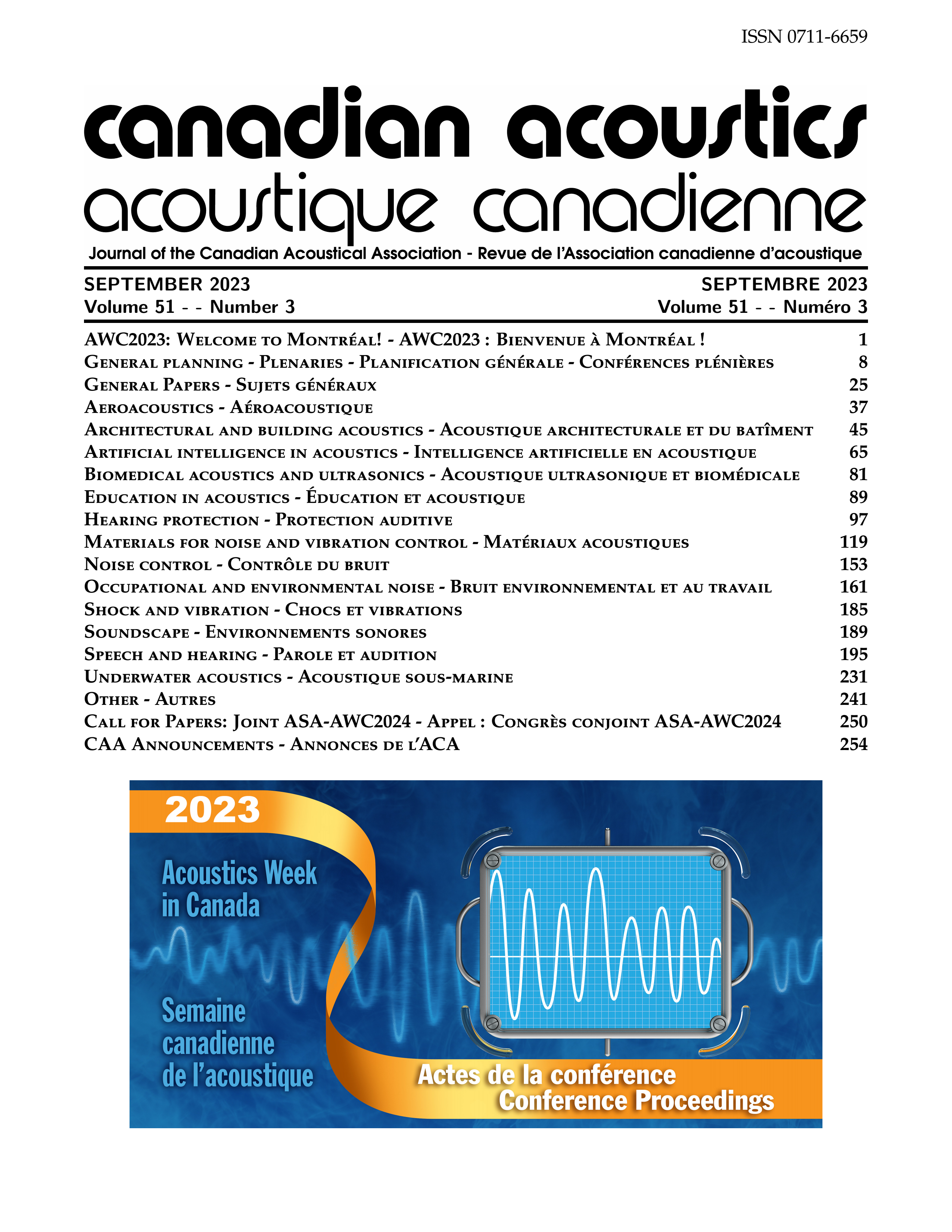Sonic Crystal Acoustic Attenuation Applied to Exhaust Air Systems
Abstract
In a society where most people spend their time inside buildings or vehicles, the need to filter the air is essential to ensure a certain level of comfort. While incorporating an exhaust fan into these enclosed spaces improves air quality, noise is generated and often creates discomfort. Better fan design helps reduce noise, but even with good design, uncomfortable noise pollution remains. To block the noise generated by the fan, without however blocking the airflow, an acoustic metacage, made of sonic crystals, can be used, taking advantage of their stop-bandproperties. This work presents a discretized modeling by transfer matrices of a network of sonic crystals that can form such a metacage. Like the finite element method, the approach discretizes the crystal lattice by periodic elements. Each periodic element is assembled to the others, either in series or in parallel, according to the serial or parallel transfer matrix methods. Thus, complex shapes of crystals can be modeled to better adapt to a medium with flow (e.g. : NACA profile). The modeling is applied to cylindrical crystals of different diameters under normal acoustic incidence. The results of the modeling are compared to sound transmission loss measurements made in an impedance tube without flow. The comparisons are good, but a correction must be made to certain elements to consider the inertia added by the constrictions between the crystals. Such a correction is proposed in this work based on a geometrical tortuosity.Additional Files
Published
How to Cite
Issue
Section
License
Author Licensing Addendum
This Licensing Addendum ("Addendum") is entered into between the undersigned Author(s) and Canadian Acoustics journal published by the Canadian Acoustical Association (hereinafter referred to as the "Publisher"). The Author(s) and the Publisher agree as follows:
-
Retained Rights: The Author(s) retain(s) the following rights:
- The right to reproduce, distribute, and publicly display the Work on the Author's personal website or the website of the Author's institution.
- The right to use the Work in the Author's teaching activities and presentations.
- The right to include the Work in a compilation for the Author's personal use, not for sale.
-
Grant of License: The Author(s) grant(s) to the Publisher a worldwide exclusive license to publish, reproduce, distribute, and display the Work in Canadian Acoustics and any other formats and media deemed appropriate by the Publisher.
-
Attribution: The Publisher agrees to include proper attribution to the Author(s) in all publications and reproductions of the Work.
-
No Conflict: This Addendum is intended to be in harmony with, and not in conflict with, the terms and conditions of the original agreement entered into between the Author(s) and the Publisher.
-
Copyright Clause: Copyright on articles is held by the Author(s). The corresponding Author has the right to grant on behalf of all Authors and does grant on behalf of all Authors, a worldwide exclusive license to the Publisher and its licensees in perpetuity, in all forms, formats, and media (whether known now or created in the future), including but not limited to the rights to publish, reproduce, distribute, display, store, translate, create adaptations, reprints, include within collections, and create summaries, extracts, and/or abstracts of the Contribution.


